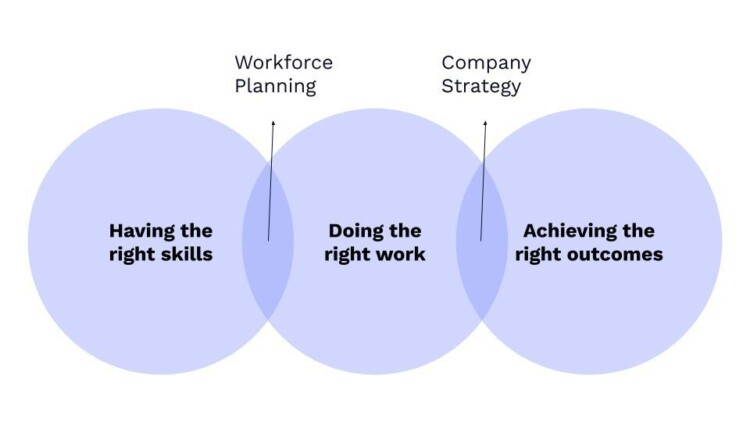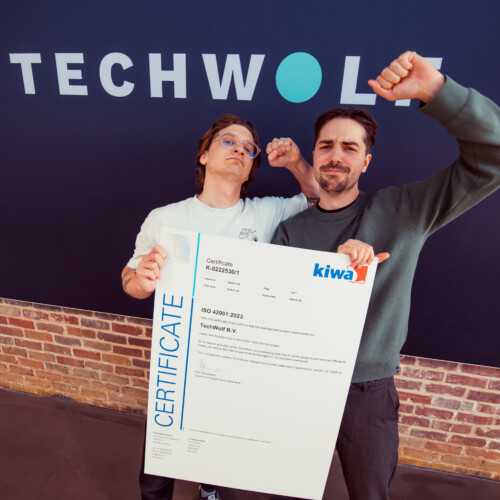Exploring the Task-Skill Connection
This blog post is part of our series on TechWolf's exploration of the intersection between skills and tasks.
In our first post, Task Intelligence: TechWolf's Exploration on the Bridge Between Skills and Work, we introduced the concept of task intelligence and its transformative potential in connecting skills to work.
Today, we take this conversation further, focusing on how tasks provide a clearer context for skills, create new opportunities for automation, and drive measurable value in the workplace. By sharing real-world insights and results, we aim to inspire organizations to rethink how they approach skill-based systems.
Tasks & Skills: the theory
Skills represent what people can do, while tasks represent what they actually do. Together, these elements create the foundation for translating workforce planning into actionable, measurable outcomes. Yet, understanding this connection is key to unlocking value.
In this picture, skills are the unit of ability to do something, while tasks are the unit of work itself.

The added value here is twofold:
- By defining and measuring the work, we narrow the gap between the skills and the outcomes they drive down the line.
- By adding an understanding of work, we understand the why behind our skills much more deeply.
For instance, workforce strategies often outline required skills, but without linking them to actual tasks, the gap between planning and execution remains. Tasks create that bridge, providing tangible evidence of how skills drive value.
How Task Intelligence Works in Practice
Task intelligence uses AI to analyze the interplay between skills and tasks, offering actionable insights. To test its potential, we applied our technology to TechWolf’s Professional Services team, integrating task intelligence with project management tools like JIRA and Asana.
This integration allowed us to:
- Analyze tasks being performed by team members.
- Identify the skills associated with each task.
- Pinpoint tasks with high potential for automation.
Real-world findings:
Our analysis uncovered several recurring, high-frequency tasks, such as:
- Creating dashboards and visualizations for customer reports.
- Generating reports, charts, and graphs to present findings.
- Providing technical support for existing tools and dashboards.
These tasks relied heavily on technical skills such as PowerBI, data engineering, API management, and scripting. By automating these tasks through a combination of our own product and external tools, we achieved $76,000 in productivity gains over six months.
But the impact didn’t stop there:
- Strategic shift: Our team redirected their focus to higher-value, strategic work such as project management, data governance, and API integration.
- Changing skill requirements: Skills like data engineering became less critical, while others like project management gained importance.
- Influence hiring practices: This evolution not only transformed how our team worked but also influenced hiring practices. By redefining the ideal profile for implementation consultants, we found it easier to attract candidates with the right mix of skills.
Deepening our understanding of skills
Tasks don’t just connect skills to outcomes—they also enhance the way we define and measure skills.
1. Identifying critical skills
In our latest prototype, task intelligence helps organizations identify the most critical skills for each role. We calculate this by determining the proportion of tasks requiring a particular skill. For example, if 40% of a role’s tasks require proficiency in Python, it’s clear that Python is a critical skill for that role.

2. Defining proficiency levels
Proficiency levels often feel abstract, but task intelligence provides concrete definitions by linking skills to specific tasks. For example:
- Beginner: Able to perform basic data analysis tasks.
- Intermediate: Capable of creating automated dashboards.
- Advanced: Skilled in developing complex data pipelines and integrations.
By grounding proficiency levels in real tasks, organizations can set clearer expectations and foster more effective skill development.

The Future of task Intelligence
At TechWolf, we believe task intelligence has the potential to make skill-based systems smarter and more context-aware. By embedding an understanding of work into skills platforms, we can help organizations:
- Optimize workforce planning.
- Enhance learning and development initiatives.
- Drive better hiring decisions.
The results we’ve achieved internally are just the beginning. As we continue exploring this space, we aim to bring these innovations to our customers, empowering them to unlock new levels of efficiency and impact.
Closing thoughts
Tasks and skills aren’t opposing forces—they’re complementary elements of a more integrated approach to workforce strategy. By connecting the two, organizations can build systems that not only measure skills but also apply them more effectively to real-world work.
Are you ready to take your skills strategy to the next level? Let’s start the conversation. Get in touch with our team today.





